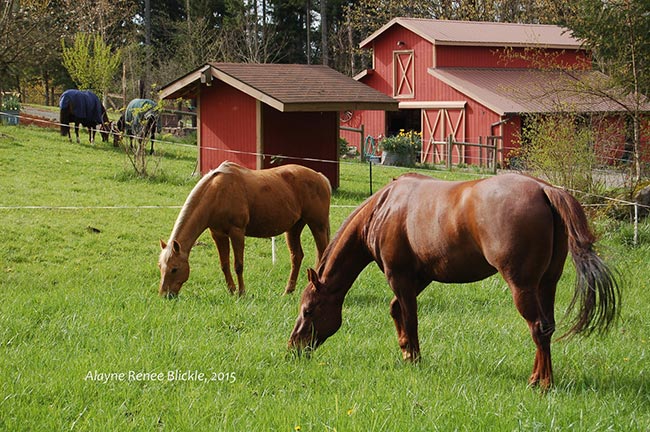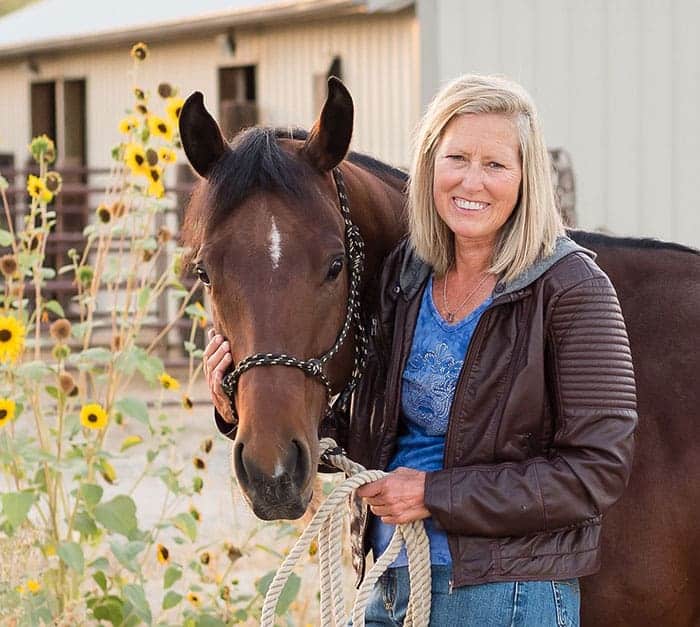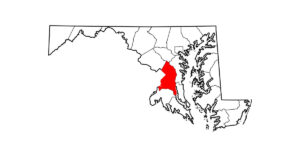You and Your Horse Can Become Environmentally Friendly
- Posted by Alayne Blickle

The quality of water in local streams, lakes and other water bodies affects and is affected by all who work or live in your watershed. A watershed is a valley or low area of land where all the water in the area eventually drains. John Wesley Powell, a U.S. geologist and explorer of the American West, described a watershed as this: “That area of land, a bounded hydrologic system, within which all living things are inextricably linked by their common water course and where, as humans settled, simple logic demanded that they become part of a community.”
No matter where we live or what we do for a living, all the choices we make affect water quality in our watersheds–either negatively or positively.
As horse owners, we need to be especially aware of how we impact the environment and take steps to minimize impacts. The end result helps preserve our equestrian way of life.
Here’s a brief look at “green” horse keeping techniques you can implement over the summer:
- Create a sacrifice area or paddock to be used to keep your pastures from becoming overgrazed, particularly during winter. This area should be on higher ground, away from ditches, creeks, or water bodies. Using a sacrifice area keeps horses from destroying pastures. It also confines manure and urine to an area where you can more easily manage it. Surround this area by a grassy buffer such as lawn or pasture to act as a filter for contaminated runoff. Using a footing in this area such as coarse washed sand or crushed rock will help cut down on mud problems in the winter months and will make it easier for you to remove manure.
- Install rain gutters and roof runoff systems on all barns, sheds and outbuildings to divert the clean rainwater away from high traffic areas. This will reduce the amount of nutrients (from manure and urine) and sediments (from soil) washed off into surface waters. This also has the added benefit of substantially reducing the amount of rainy season mud created in your sacrifice areas.
- Cross fence pastures and rotate horses in order to prevent overgrazing and soil compaction. At least three inches of leafy material is needed for rapid regrowth and for the biofiltration of nutrients, sediments and chemicals in your pastures. Compaction of the soil makes water infiltration and root growth difficult. Poor pasture management results in reduced quality and quantity of grass, increased soil erosion, nitrogen runoff (from manure and urine) and weeds. It also increases feed costs because of the reduced pasture productivity and potentially increased vet bills if your horse eats toxic weeds.
- Implement a manure management program. Begin by picking up manure on a regular basis in all confinement areas and high traffic sites. Stock pile manure away from ditches or water bodies and consider beginning a composting system. Compost is a rich soil amendment which improves the productivity of pastures, making grasses healthier and better able to hold moisture.
In this age of more and more development, we as horse owners need to consider the impacts we have on our neighbors and the environment. Are we contributing to reduced water quality in our watershed, creating an eyesore and a fly haven? Or, is our horse operation pleasing to look at, healthy for our horses and a home for wildlife? To insure horse owners a place in the future of your community, take steps toward becoming an asset to your watershed.
Let me know what steps you’re taking!
Alayne

Written by:
Alayne Blickle
Related Articles
Stay on top of the most recent Horse Health news with













5 Responses
wow i never knew these things!!
re: You and Your Horse Can Become Environmentally Friendly
We live 1 mile from the Colorado River boarding California (where we live) and Arizona. We have had flies, before we have had our horse’s. I have spent a good $3,000 to rid of flies. The best product for us in the Desert, are the small bags with the sm
re: You and Your Horse Can Become Environmentally Friendly
We live 1 mile from the Colorado River boarding California (where we live) and Arizona. We have had flies, before we have had our horse’s. I have spent a good $3,000 to rid of flies. The best product for us in the Desert, are the small bags with specia
re: You and Your Horse Can Become Environmentally Friendly
I use fly predators. No flies in the barn.
I also use the "green fly trap" that traps and kills larger, biting flies. It is non-chemical and environmentally friendly.
Google them both to see how much you can enjoy fewer flies.
re: You and Your Horse Can Become Environmentally Friendly
Very good article, although you neglected to mention an excellent and extremely green method of manure management: spreading it! Whether fresh or properly composted, manure is a terrific source of free fertilizer. Breaking it up on pastures helps distr